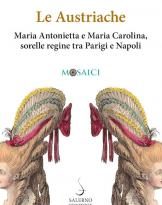Sandro Matteoni
Ed Giunti
pp. 308
I had enough of Hollywood TV series about the Romans. It is good to romanticize over history, but I could no longer see the glorious centurions and their soldiers die like stupid and the generals painted as emeritus incapable! But hadn't the Romans been able to build their Empire thanks to their own powerful army?
It was worth brushing up some military history. Due to my proverbial ignorance, however, I initially lost myself among dozens of book titles on the subject. Then I was intrigued by a work that offered a particular point of view: that of Matteoni, a military historian who dedicated a book to an outpost of the Roman Empire in northern Britain, the fort of Vindolanda. It was built along an important Roman military road, close to the area where later the famous "Vallo Adriano" was built, which for years helped defend the Empire from the northern "barbarians".
In fact, thanks to this book I found many answers to my doubts and I learned a lot of new information on the powerful and refined Roman military machine. It is, in fact, an excellent work based on an exceptional archaeological discovery that has allowed us to reconstruct the lives of soldiers belonging to some auxiliary units of the Roman army within the fort. But don't be fooled by the term "auxiliary". Matteoni, in fact, explains how we should not run into the error of thinking that these units had a secondary role in the Roman army. On the contrary, they were light infantry or cavalry or mixed units, to which a precise and relevant role was assigned in the Roman war machine. In fact they were integrated into the battle orders of the army and flanked the elite heavy infantry units: the famous Roman Legions. Furthermore, the cohorts auxiliary had a peculiarity: unlike the Legions, composed entirely of Roman citizens, they were formed by soldiers from the provinces of the Empire, who acquired the coveted Roman citizenship only after at least 20-25 years of rest (if they survived the military campaigns) to which they participated!). Moreover, each cohort it was composed of soldiers belonging to the same ethnic group or tribe and often there were many blood relatives among them. A guarantee for the cohesion of the departments.
Returning to the book, after a first part dedicated to tracing the history of the Roman occupation of Britain, it reconstructs the history and life within the fort of Vindolanda, based on the engravings of the numerous wooden tablets found and on the other findings miraculously reached the nowadays, thanks to the particular geological conformation of the land. In particular, this exceptional discovery allowed us to reconstruct life in the fort in the periods in which they served you for Rome cohorts auxiliaries of the Batavians and the Tungri. These were two tribes of the central and northern European territories that are now part of Belgium and the Netherlands. The warriors of these tribes earned on the battlefield the reputation of being formidable and valiant fighters. So much so that the Empire granted the Batavians the privilege of not paying any tribute to Rome, but they had the honor of serving Rome by continually supplying fresh troops to be deployed in the army. An honor reserved for very few other populations of the provinces and for this reason the Batavi soldiers felt fully integrated with the Roman "colleagues" of the most renowned Legions.
Reading the book it was extraordinary to discover how widespread was the writing in Latin among the soldiers of these units, between their family members and even among their slaves. And it was extraordinary to read the contents of the tablets that reached our days, to be able to relive life in the fort and get to know the people who lived there. It is surprising to learn how impressive, efficient and modern the Roman war machine was. Certainly he was not invincible, but he was able to maneuver on a chessboard that included the whole world then known with the sole aid of the signal towers, the roads and the relay races on horseback. It was a modern army, based on a few elementary pillars: discipline, organization, strategy and logistics. That's all. But they were really applied principles, not words.
I confess that reading the book of Matteoni I found myself several times to imagine the commander, indeed the prefectand IX Batava cohort, Flavio Ceriale who at the head of his department turns to "his" fort to admire it one last time. Who knows what thoughts will have passed in his mind as he watched his centurions give their march to their respective centurias? He must have thought that it was thanks to their value and the fame of his tribe if the Emperor had given the order to leave the fort to the Tungri soldiers and to march towards the Danube, up to a region of present-day Bulgaria. There the second invasion of Dacia was beginning (Romania today) and the Emperor needed the Batavians to fight side by side with his Legions! With these thoughts Flavio Ceriale probably looked for a last time at the garrisoned fort for years, keeping the "pathetic Britons" or "Brittunculi" at bay, as a Batavo soldier called them to train young natives to war. Finally Flavio will have turned around and given the order to march towards Dacia, from which he and his men will never return. Of the IX cohort Batava, in fact, has lost its traces in the remote lands of central and eastern Europe.
Suddenly, while I'm lost in these thoughts, the news reports of the news show me back to the current sad Italian reality and I wonder: "How could a civilization like this collapse and disappear?" it comes to mind before a fire-red subtitle bursts like lightning under the journalist's belly: the large white letters solemnly announce that the new Emperor has been elected! I naturally ask myself "and now what fate awaits the provinces of the Empire and theirs cohorts auxiliary?"
Ciro Metuarata












